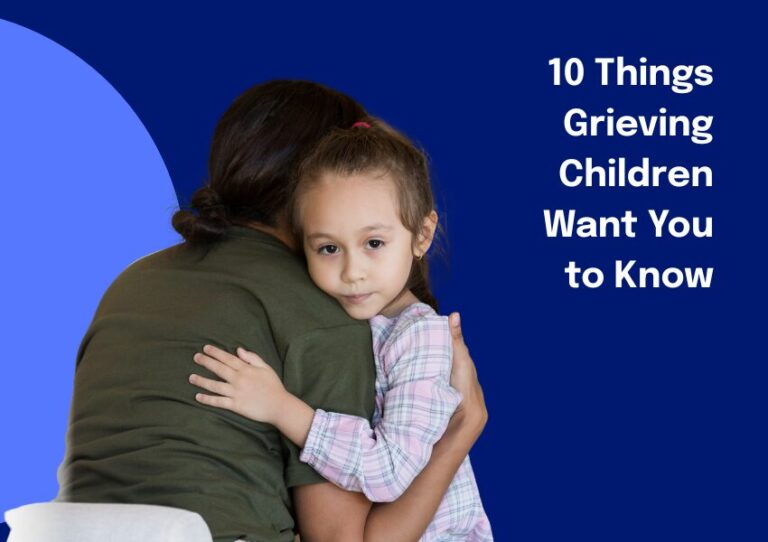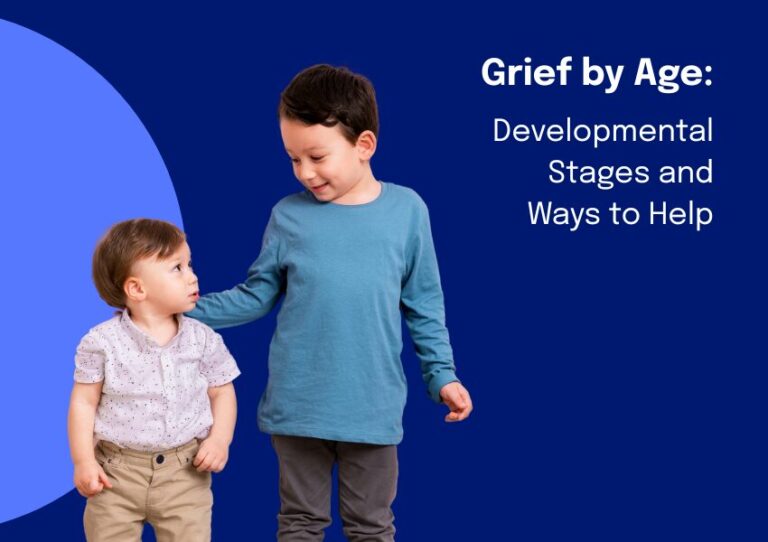Understanding Anger and Grief in Children
 Anger is one of the most common expressions of grief, yet it is often the most misunderstood. While most people expect to see sadness and crying as expressions of grief, anger often accompanies grief as well. Because anger is often an unexpected reaction to loss, many do not know how to react to its appearance and may become concerned that it is not “appropriate to be angry” when someone dies.
Anger is one of the most common expressions of grief, yet it is often the most misunderstood. While most people expect to see sadness and crying as expressions of grief, anger often accompanies grief as well. Because anger is often an unexpected reaction to loss, many do not know how to react to its appearance and may become concerned that it is not “appropriate to be angry” when someone dies.
Remember, that everyone grieves differently and that ALL emotions are appropriate.
The actions that accompany the emotion may not always be the most helpful!
Why is anger a part of the grieving process? At whom or what would anger be directed?
Let’s explore the latter question first. When someone you love dies, you might feel angry with that person. You may become angry that the person you were expecting to spend the rest of your life with has left you. You may feel abandoned. You may have been surprised by the death and this kind of surprise often leads to feelings of anger. You may be feeling overwhelmed by all the decisions that have to be made and by the “business” of death and wish your loved one were still with you to help with these decisions. Anger does not have to be rationale to be real.
Some become angry with God or their Higher Power. They may express feelings of betrayal (“I thought I would be protected”) or abandonment (“Where was HE when we needed Him the most?!”) Anger is often expressed towards those who were involved with the death in some manner. The EMT squad that did not respond quickly enough, the doctor or nurse, the drunk driver, the perpetrator, the legal system, all can become targets for grief-related anger. Sometimes anger is directed towards those who are laughing or who seemingly are having a “wonderful life”. One woman described how angry she was when she saw her neighbor’s beautiful flowers blooming on a sunny afternoon. She described feeling “left out” of the beauty of the world.
Frustration and Helplessness
And sometimes, anger turns inward and becomes guilt. The FINGER of BLAME points OUTWARD, towards others in an attempt to establish cause and to fix fault. When there is nothing left to blame, however, the direction of the finger pointing changes and the FINGER OF GUILT turns INWARD. “I should have, or could have donesomething.” “If only” becomes the watchword for the bereaved who may become lost in the despair of guilt and anger.
One may grow angry because there is no logical reason for whatever happened or that nothing NOW can change what happened. The sense of frustration grows until it bursts forth into full-blown rage. Children often become angry for all the same reasons adults do. They feel frustrated and helpless in the face of enormous change and the grief that washes over them may be tinged with anger and expressed with angry words or actions.
Anger is not a primary emotion, although it is so powerful that it often feels as if it were a “First Emotion”.
Think of a time when you were angry. Don’t pick something too emotional for this exercise. Thinking of this time when you were angry, can you identify any other feelings besides anger? Anger has its birth in several other emotions that occur long before anger is born. Anger is so powerful, however, that it often overshadows these “first emotions”. Underneath anger is frustration. When you are thinking of a time when you were angry, see if you can identify what was frustrating about the situation. Often it is a sense of frustration that goes unrecognized that gives birth to anger. “If only” are the words that speak of frustration.
And, if you really think about it, you may discover that underneath the sense of frustration, you find a sense of helplessness. No one likes to feel helpless, so that feeling is often quickly converted to anger. Helplessness is a weak feeling; one without controls or power. “I should have” or “I could have” are the words that speak of helplessness. So, underneath anger are frustration and helplessness, both very powerful emotions in their own, but neither feel very energizing or powerful. So we often convert those powerless feelings into something more powerful, more “action-oriented”: anger.
By understanding this hierarchy of anger, it is easier to see how anger “grows” and therefore, much easier to see how to help “defuse” it. Many anger management programs are designed to simply STOP the behavior and many are quite effective. But until the root of the emotion is identified, anger can only be managed, not understood, respected and channeled appropriately.
ANGER = ENERGY
Thinking about anger as being energy gives us an opportunity to understand its power. It is neither negative nor position energy. It does demand a great source of energy, however, to be angry. The physiology of anger is quite simple to understand, although we will not go into any depth here. The anger response resembles the “flight or fight” response that you learned about in general science. Remember that your body doesn’t care whether you are running towards the tiger or away from it…it just knows it has to “DO SOMETHING NOW”!!!!!!!!!
Stress Hormones:
Without your consent or control, stress hormones including adrenaline and cortisol flood your body, causing:
- Your body’s need for oxygen to increase
- Your heart rate and blood pressure to go up
- The blood vessels in your skin to constrict
- Your muscles to tense
- Your blood sugar level to increase
- Your blood to have an increased tendency to clot
- Your body’s cells to pour stored fat into the bloodstream
- Your bowel and intestinal muscles tend to constrict
All of these physical changes can lead to increase risk of stroke, heart attack and a wide variety of physical aliments. It is important to recognize, however, that anger is a state of being, with both physical and emotional components and that anger is neither positive nor negative. Society puts a value judgment on anger, depending upon many cultural variables.
Anger, however, can be both positive and negative, in the same breath! It is up to us to establish its value.
Remember that anger is simply energy, waiting to be harnessed, used or ignored. If we can harness it and use it appropriately, great things can happen. MADD (Mothers Against Drunk Drivers) used their “anger” (energy) to help create new laws and procedures for prosecuting drunk drivers. POMC (Parents of Murdered Children) did the same thing with their rage: changing the way perpetrators are prosecuted. The United States was built by people who were angry at what was happening in England and they came across the Atlantic (which took lots of energy) to carve out a new world and way of doing things.
Anger can also be negative. You can probably think of more examples of destructive anger than you can of constructive anger. However, both have the human element of choice at their roots. We can choose how we feel and how we use those feelings in word and action. This information can be given to children who are expressing their sense of helplessness, frustration and the grief of not being understood or heard in anger. Anger is not an inappropriate emotion. Its accompanying actions, may however, be less than ideal in some settings.
Therefore, helping children with their anger can be the challenge of trying to understand the nature and root cause of the anger and then finding appropriate ways to express it completely in personally non-destructive ways. It is not managing the emotion; it is understanding that anger is really like an iceberg. You usually only see the tip rising above the surface.


